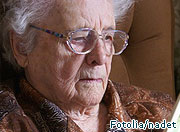A judge in the Netherlands has allowed an 80-year-old woman to be euthanised, despite objections from the medical staff looking after her.
According to media reports, the woman was living in a dementia care home and doctors thought she was incapable of expressing her will to die.
But the woman’s family claimed she had a ‘death wish’ and obtained a court order when the care home refused to let her be euthanised.
Killed
Medical staff treating her fought against the decision, but a judge rejected the appeal and the court order remained.
Last month she was removed from the care home and killed by the ‘Life End Clinic’ which was started by activists to make euthanasia more accessible for people in the Netherlands.
Euthanasia was legalised in the country in 2002 and under the law doctors must fulfil certain criteria such as ensuring that a patient’s request is voluntary and being satisfied that they are suffering unbearably.
Dementia
If a patient has dementia, doctors can only euthanise them if an ‘advance directive’ or ‘living will’ is in place.
A survey of doctors in the Netherlands who specialise in euthanasia has revealed that more than half approve of the practice for patients with dementia.
Of the 547 doctors surveyed, 52 per cent could imagine themselves personally allowing the practice in cases where the dementia patient has made an advance directive but is now unable to express their will.
Default’ mode
Last year a Dutch academic warned Westminster not to legalise assisted suicide because the number of euthanasia deaths in the Netherlands has soared since the legalisation of the practice in 2002.
Theo Boer originally supported euthanasia, but has now reviewed close to 4,000 euthanasia cases and said that it is becoming the “default” mode of dying for cancer patients.
He said: “Cases have been reported in which a large part of the suffering of those given euthanasia or assisted suicide consisted in being aged, lonely or bereaved.
“Some of these patients could have lived for years or decades”, he added.

